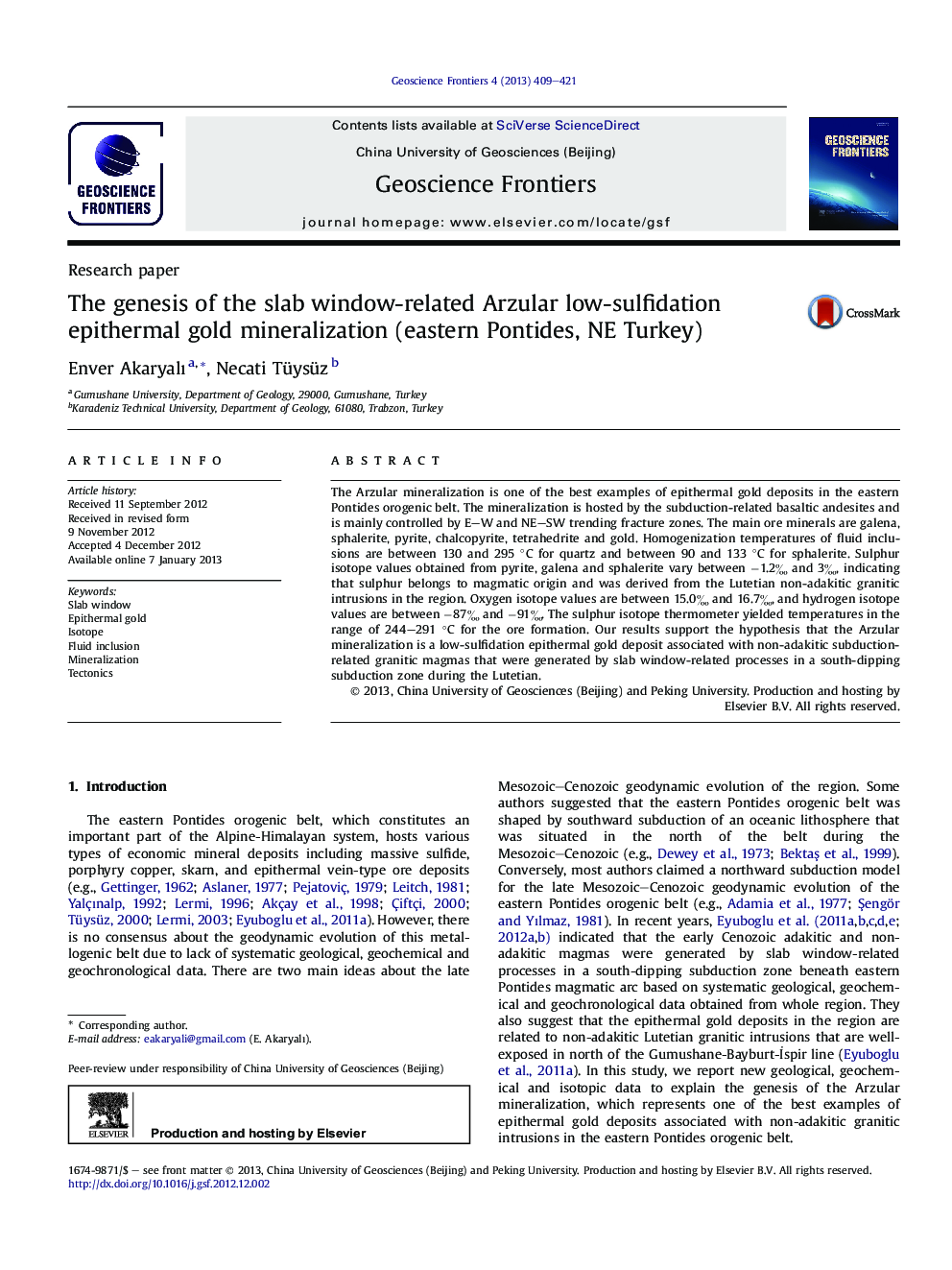| Article ID | Journal | Published Year | Pages | File Type |
|---|---|---|---|---|
| 4681745 | Geoscience Frontiers | 2013 | 13 Pages |
The Arzular mineralization is one of the best examples of epithermal gold deposits in the eastern Pontides orogenic belt. The mineralization is hosted by the subduction-related basaltic andesites and is mainly controlled by E–W and NE–SW trending fracture zones. The main ore minerals are galena, sphalerite, pyrite, chalcopyrite, tetrahedrite and gold. Homogenization temperatures of fluid inclusions are between 130 and 295 °C for quartz and between 90 and 133 °C for sphalerite. Sulphur isotope values obtained from pyrite, galena and sphalerite vary between −1.2‰ and 3‰, indicating that sulphur belongs to magmatic origin and was derived from the Lutetian non-adakitic granitic intrusions in the region. Oxygen isotope values are between 15.0‰ and 16.7‰, and hydrogen isotope values are between −87‰ and −91‰. The sulphur isotope thermometer yielded temperatures in the range of 244–291 °C for the ore formation. Our results support the hypothesis that the Arzular mineralization is a low-sulfidation epithermal gold deposit associated with non-adakitic subduction-related granitic magmas that were generated by slab window-related processes in a south-dipping subduction zone during the Lutetian.
Graphical abstractFigure optionsDownload full-size imageDownload as PowerPoint slideHighlights► The mineralization is hosted by subduction-related basaltic-andesitic rocks. ► The mineralization is a low-sulfidation epithermal gold deposit. ► The mineralization is related to non-adakitic Lutetian granitic intrusions.
